Glenwood
Houses within 5km of this house
Displaying 18 houses.
Houses within 5km of Glenwood
Displaying 18 houses.
| House name | Description | |
|---|---|---|
| Ballyclogh [Ballyclough] | This property was inherited by the Barrys through marriage with a member of the Purdon family. Parts of this house may have dated from the 17th century. Lewis writes of "a handsome mansion in the Elizabethan style". Additions were made in the 19th century. At the time of Griffith's Valuation it was valued at £34 and held by James Barry in fee. The house was burnt in the 1920s. The north wing survived, built 1904. In 1944 the Irish Tourist Association survey noted that Ballyclough was the birthplace of Sir Redmond Barry, "prominent in public life in the state of Victoria, Australia". It was restored and is still a residence. |
![Photo of Ballyclogh [Ballyclough]](https://landedestates.ie/storage/img/orig/1568.jpg)
|
| Downing | This was the home of the Hendley family in the 19th century. Robert Hendley was the occupier in 1814 and Arthur Henly in the early 1850s. Arthur Henly held the property in fee and the buildings were valued at £9.5 shillings. | |
| Rockville | At the time of Griffith's Valuation occupied by Michael Mockler and held from the representatives of Matthew Hendly, the buildings were valued at £26. The Mocklers advertised the sale of their interest in July 1851 and July 1853. The sale rental records the lease of Rockville by Ferguson Hendley to the Reverend James Mockler for 3 lives in July 1841 and that £2,000 had been spent on the house. Caroline Bourke occupied a mansion house with 37 acres in the townland of Licklash in 1906. It was valued at £60. In the 1870s Michael Bourke of Lecklash owned 37 acres. This house later became a summer home of Sir Oswald Mosley. Also known as Isleclash House. |
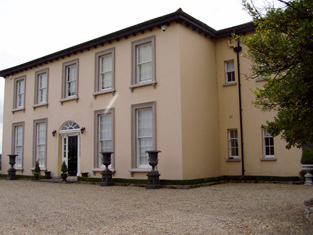
|
| Maryville | The home of Laurence Corban in 1837 when Lewis records it as “ a handsome mansion of recent erection and finely situated on the Funcheon [River]”. Laurence Corban held Maryville House and the mills in perpetuity at the time of Griffith's Valuation. The house was valued at £32 and the mills complex at £160. The Lucas family succeeded to this property and Hajba writes that it became the dower house for nearby Ballynacarriga. The Irish Tourist Association surveyor in the 1940s reported that it was then occupied by Mr. Glass, an agricultural instructor. In 1965 the house was sold by the Corban Lucas family. It remains a family residence. | |
| Rath-healy | In 1786 Wilson refers to Rath-hely as the seat of Mr. Bryan. It was the home of Arthur Hyde Lucas and his son and namesake in the 19th century. Arthur Hyde Lucas is recorded as occupier at the time of Griffith's Valuation, holding the property from John Hyde when it was valued at £20. In 1880 the property passed to Henry John Lucas, nephew of the second Arthur Hyde Lucas. Sold by the Lucas family in the 1920s and still inhabited. | |
| Ballynacarriga | A mid 18th century house, home of the Pyne family for over a century until they sold it in the Encumbered Estates' Court in 1852. Before the sale John G. Pyne was resident, holding the property in perpetuity. The buildings were valued at £18.10 shillings. Bought by Laurence Corban it passed from the Pynes to the Corban Lucas family, members of whom were still resident at the beginning of the 21st century. |

|
| Moorepark | A large Georgian house, the seat of the Earls of Mountcashell, extended in the 19th century. In 1786 Wilson describes it as "a superb and noble seat". It was held in fee at the time of Griffith's Valuation when it was valued at £87. Bought by the War Department in 1903 and accidentally burnt in 1908. In 1944 the Irish Tourist Association Survey noted that the remains of the kitchen were still visible then. Nothing remains of the original house and the site now belongs to Teagasc, the Agricultural and Food Development Authority. | |
| Licklash | Occupied by James Reid in the early 1850s and held from the representatives of Matthew Hendly, the buildings were valued at £18. This house later became a summer home of Sir Oswald Mosley. Also known as Isleclash/Ileclash House. This house was offered for sale in 2010. http://www.michaelhdaniels.com/index.cfm?fuseaction=propdetails&Prop_RefId=24 |
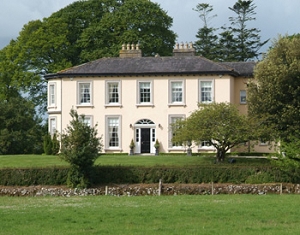
|
| Mountrivers | This house was a Hendley home in the 18th and 19th centuries, occupied by Mathers Hendley in 1814 and Mattias Hendley in 1837. Mattias C. Hendley was resident in the early 1850s. He held the property in fee and the buildings were valued at £27. The Hendleys contined to reside at Mountrivers until the 1930s and the house is still occupied. |
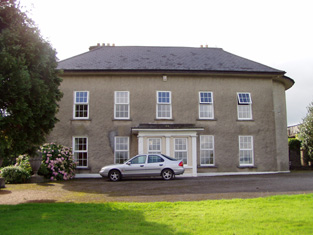
|
| Grange Hill/The Grange | William Forward Austin was resident at Grange Hill in 1837 and in the early 1850s when he held the house valued at £41 in fee. Hajba writes that this property belonged to William Forward and was inherited by one of his daughters who was married to William Austin. William F. Austin was their son. Later the home of the Sadliers [1906] and Magniers, still inhabited. William Sadleir medical doctor was resident from circa 1866. |
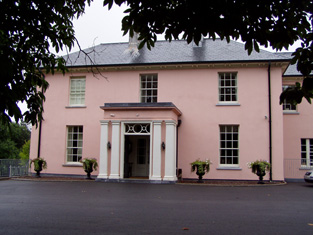
|
| Ashfield House | Occupied by John William Anderson in 1837 and by Denis Downing in the early 1850s who held the property from John Hyde. It was valued at £25. In 1942 the Irish Tourist Association Survey indicated that it was then the residence of William Bowden. This house is still occupied. | |
| Grange Farm | Originally part of the Forward estate which passed to Garret Nagle who had married the sister of William Forward. Marked on the first Ordnance Survey map as a farm yard by the 1850s James Roderick O'Flanagan was resident in a house valued at £13.5 shillings. He held the property from the representatives of John William Anderson. |

|
| Fermoy House | Lewis refers to Fermoy House in 1837 as the residence of the late J. Anderson “to whom not only the town owes its prosperity but the entire country…”. It was then occupied by Mrs Hennis. The Reverend Maurice Collis was in residence by the time of Griffith's Valuation. He held the property from Sir Robert Abercrombie and the buildings were valued at over £50. In 1786 Wilson writes of a house at Fermoy, the seat of Mr. Bryan. The Irish Tourist Association Survey of 1942 states that Fermoy House was then the property of Maurice Cooke Collis and was divided into five flats. The house was demolished in the 1960s. | |
| Rushmount | Located on the Mountcashell estate this house was occupied by Daniel Gearan in the early 1850s, when it was valued at £19. It remained in the possession of the Gearan/O'Geran family for the rest of the 19th century. |
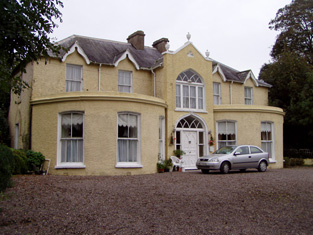
|
| Douglas House | Occupied by Henry Deece in 1837 and by Lady Mountcashell in the early 1850s. Held from the Earl of Mountcashel and valued at £16.10 shillings. Later the home of the Magniers and still a residence. |
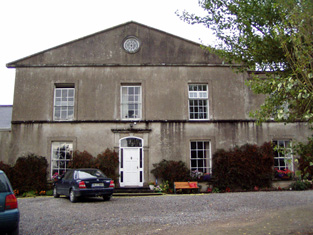
|
| Woodview | Occupied by Lieutenant F.Prangnall RN in 1837 and held by the Earl of Mountcashel in fee at the time of Griffith's Valuation when it was valued at £16. 5 shillings. Later occupied by the Smithwick and by the Lucas family in the 20th century until a fire in the 1930s. Recently restored and occupied again. | |
| Glansheskin | Occupied by John P. Pierse in the mid 19th century. He held the property valued at £19+ from the Earl of Mountcashel with a cornmill valued at £20. Later the property of the Cooke Collis family, this house is still occupied. | |
| Park House | Hajba writes that David Richard Pigot, Chief Baron of Ireland 1846-1873, was born at Park House in 1797. He was the son of Dr John Pigot and Margaret Nagle and married Catherine Paye [Page in DNB] of the nearby Araglin Mills. Th house was valued at £7.10 shillings in the early 1850s and was occupied by the Reverend James Daly, who held it from William Byrne. The Pigotts continued to own this property until at least the late 19th century. Occupied by the Howard family in the 20th century. The Irish Tourist Association Survey notes that it was also referred to as "Rock House". The survey also refers to another house owned by the Pigot family on the main street in Kilworth. |

